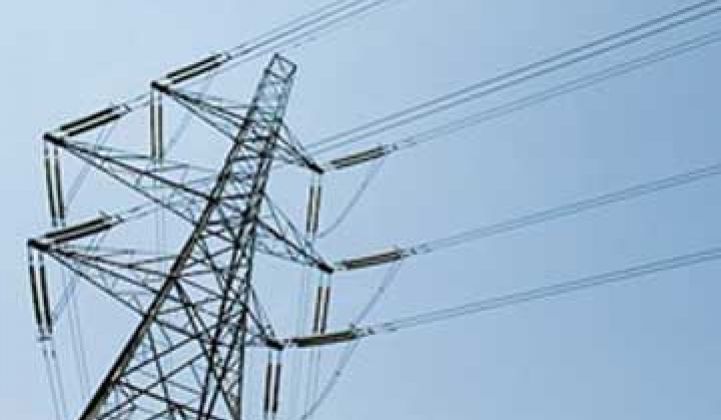America’s electric infrastructure received some love -- or at least lip service -- from the White House on Monday. The Obama Administration announced various initiatives to continue the modernization of the grid. The plan was laid out in a new report, “A Policy Framework for the 21st Century Grid: Enabling Our Secure Energy Future.” (PDF)
Secretary of Energy Steven Chu spoke about the fact that the U.S. was behind not only countries like China in grid investment, but also other nations, such as Ireland and Spain, that are also far ahead in integrating renewables into their systems.
“We don’t seem to be anticipating these technological changes,” Chu said. To help spur grid modernization and energy efficiency, the White House highlighted its new initiatives to speed smart grid adoption:
- $250 million in loans for smart-grid technology deployment as part of the U.S. Department of Agriculture’s Rural Utility Service
- The launch of Grid 21, a private sector initiative to promote consumer-friendly innovations while ensuring proper privacy safeguards and consumer protections. Grid 21 will help consumers get better access to their own energy usage information so that they can take advantage of new tools and services to manage their energy use and save on their utility bills.
- New commitments by the Department of Energy to focus on improving consumer access to their own energy information, including the development of a crowd-sourced map to track progress and a data-driven competition designed to harness the imagination and enthusiasm of America’s students to encourage home energy efficiency.
- Expanded partnerships to continue working with states and stakeholders, including an initiative to share lessons learned from Recovery Act smart grid investments.
- The formation of a Renewable Energy Rapid Response Team, co-led by the White House Council on Environmental Quality, the Department of the Interior, and the Department of Energy, to improve Federal coordination and ensure timely review of proposed renewable energy projects and transmission lines.
The report also called for rethinking the regulatory framework, as well as for more decoupling so that utilities are incentivized to save energy and operate more efficiently.
“We can’t do this state by state,” said Bob Shapard, Chairman and Chief Executive Officer of Oncor at a panel discussion at the White House on Monday. To bring stakeholders together, the Department of Energy has proposed a Smart Grid Innovation Hub that would help consolidate the efforts of researchers, the private sector, utilities and other stakeholders to help push best practices forward.
Although there has been some sharing of best practices, there needs to be much more. The California legislature recently required the state’s three large utilities to file 10-year smart grid roadmaps. Each utility had a smart grid plan in place already, but they all said that the legislation required them to collaborate with each other much more than they had in the past and that that process proved to be invaluable. Ideally, a national smart grid hub would allow for that sort of collaboration at a federal level.
On the consumer side, Grid 21 kicked off with a competition in Texas and California, Biggest Energy Saver, which will encourage people to save energy for the chance to win different prizes, according to Shapard. The competition, which is open to customers of Oncor, Centerpoint and San Diego Gas & Electric, also calls for developers to create apps that leverage smart meter data.
Outside of those two states, the plan clearly called for allowing every consumer to have access to their electricity usage data through websites or by other means. In Texas, that’s already a reality -- but some utilities in other states are likely to bristle at the policy framework if they don’t have plans for smart meters. For companies that help utilities deliver that information, like OPower or Tendril, the news should give a boost to an already growing market.
Overall, however, the announcement did not come with much funding (aside from the $250 million) or specific action points geared toward the near term. The framework will spark discussion, but if it isn’t translated into solid policy, it will likely be business as usual for too many utilities and regulators.



